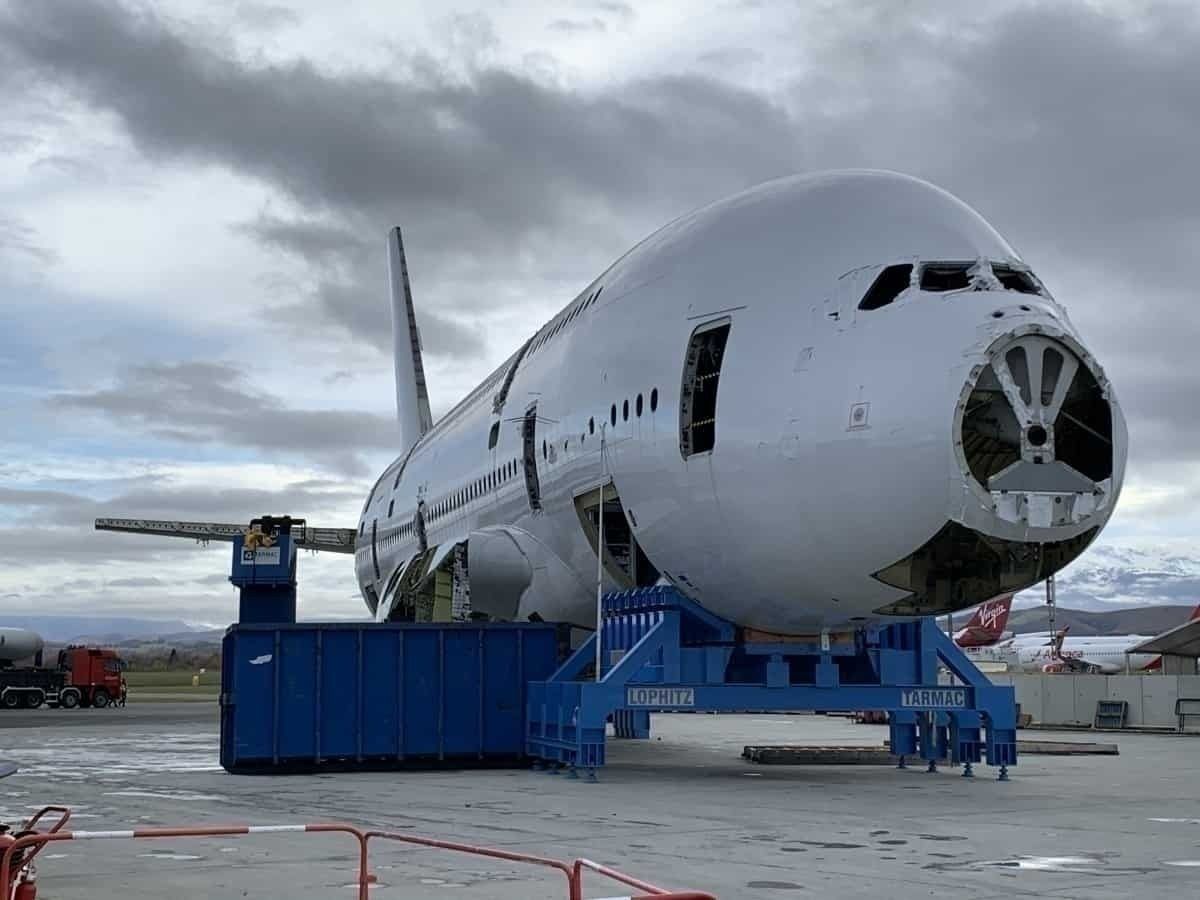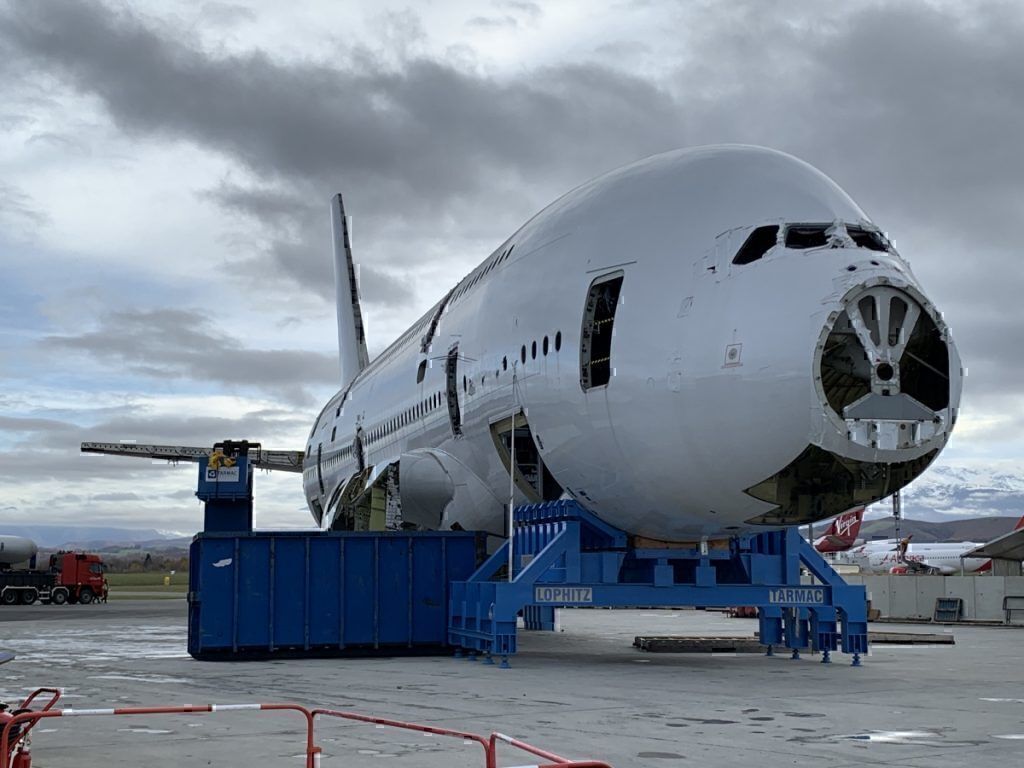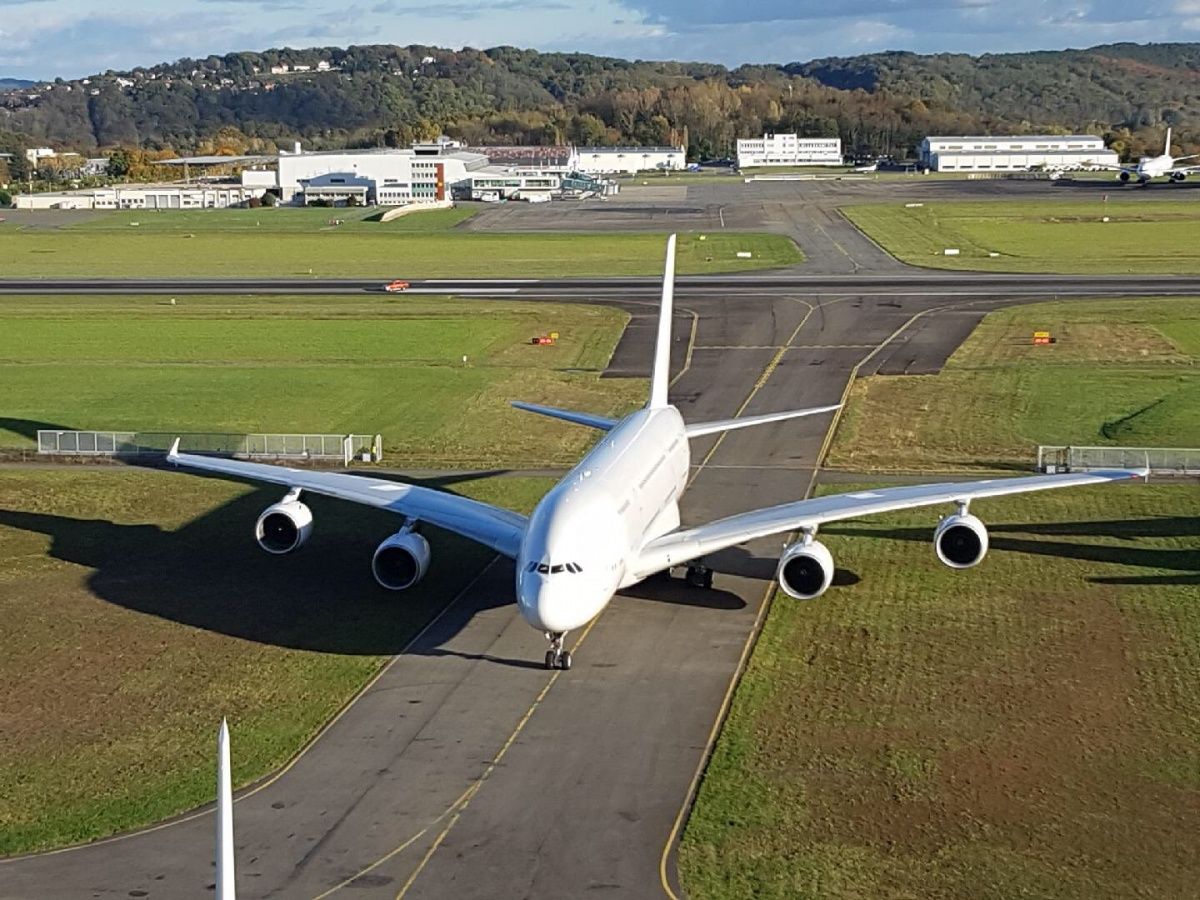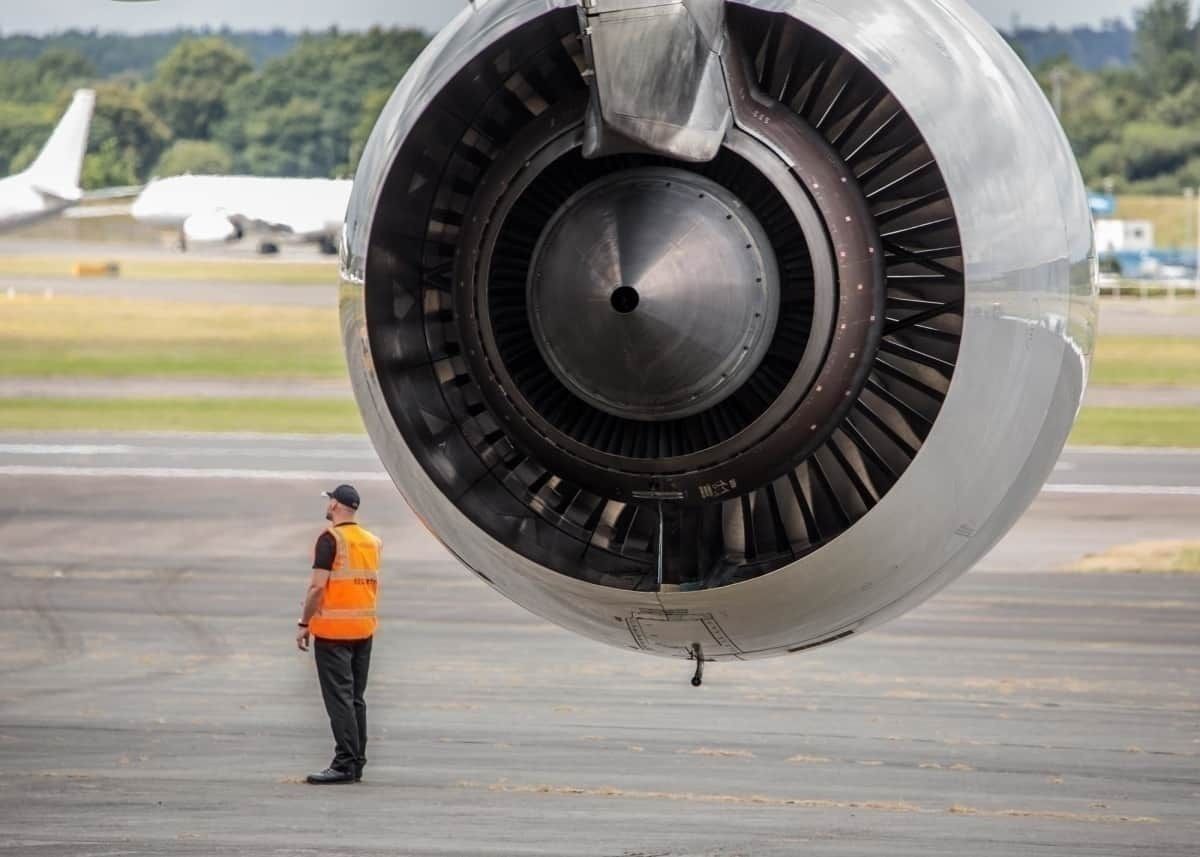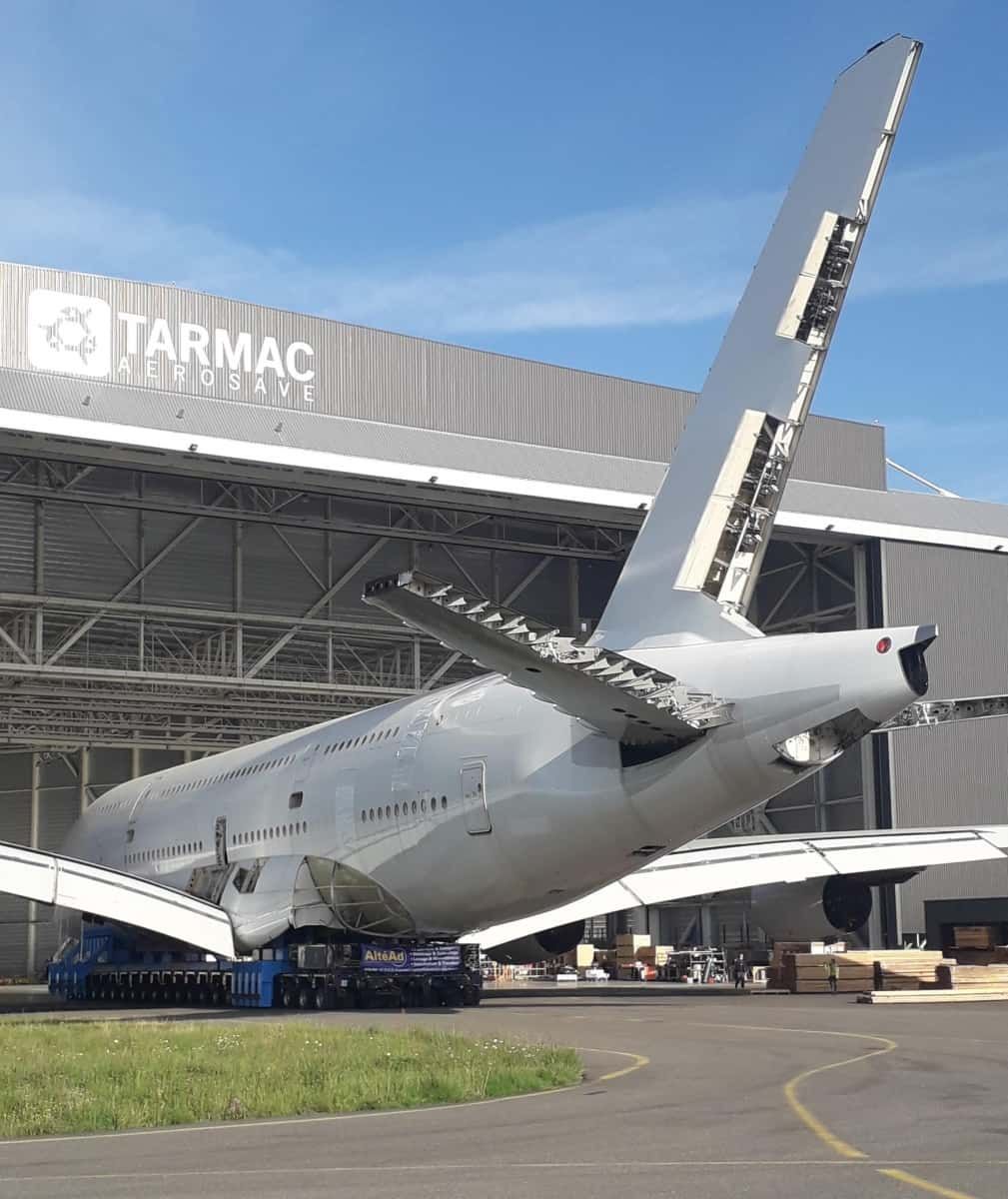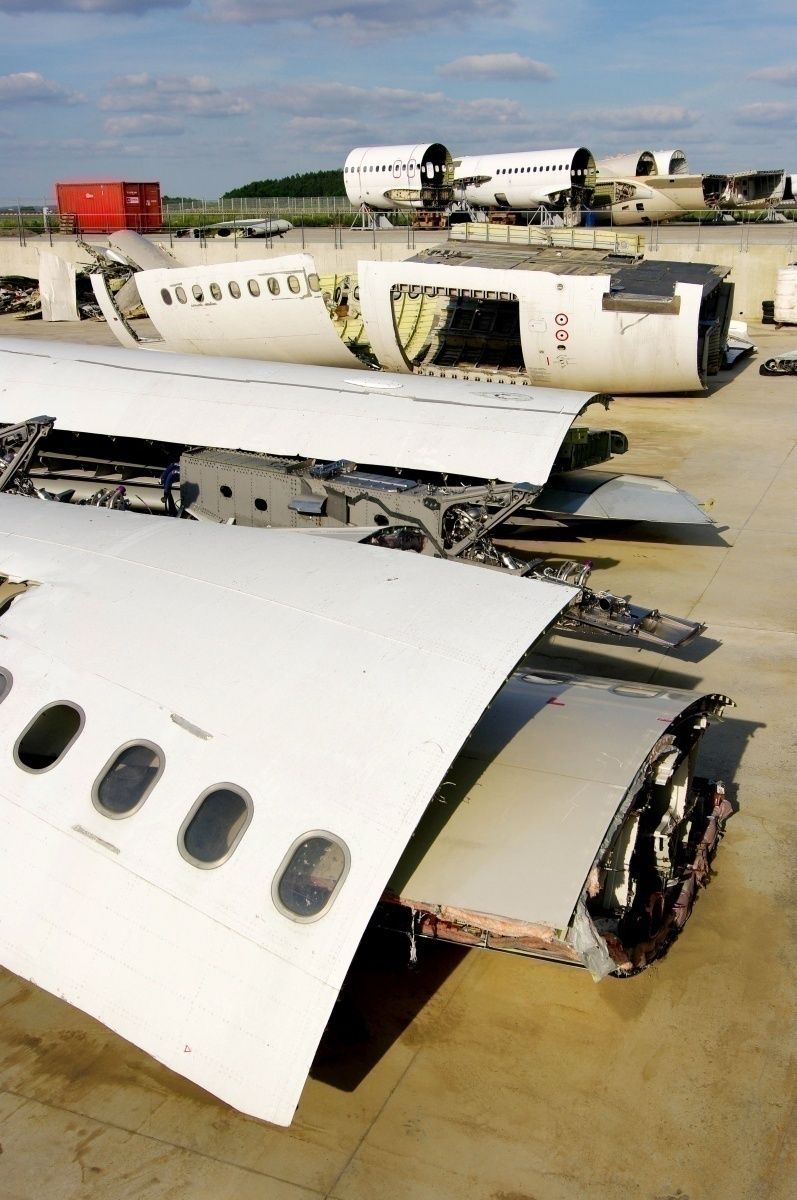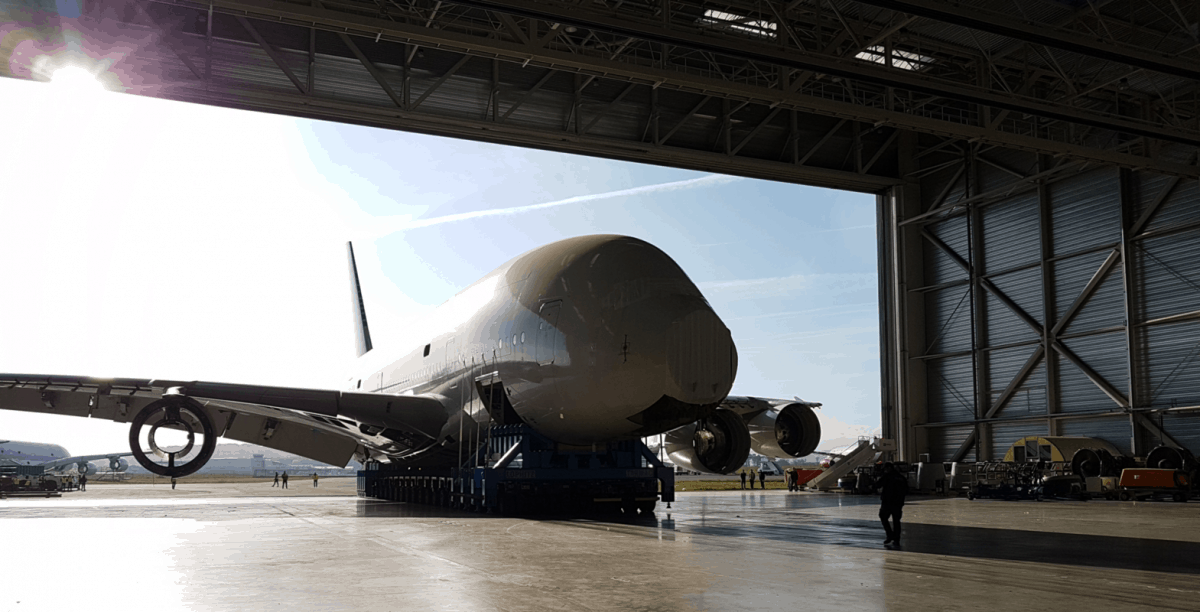It’s no big secret that some of the world’s A380s have already arrived at the scrapyard. With limited appeal on the second hand market, these giant jumbos are considered to be worth more as parts than they are as complete planes. But how do you actually scrap something as substantial as the biggest plane in the world?
Scrapping aircraft for parts
The process of scrapping an A380 is no simple task. The parts salvaged from the plane are valuable and need to be removed carefully, and the whole process must be eco-responsible, to avoid environmental contamination and excessive waste.
Around the world, more than 400 aircraft a year are scrapped and disassembled. This has made for a robust secondhand parts market, worth an estimated $2bn.
TARMAC Aerosave was the first company in the world to be tasked with dismantling an A380, and managed to complete this job in just 11 months. Here’s how they did it.
First steps
The process of scrapping any aircraft has to follow similar steps, regardless of the type. The first job is to wash the outside of the aircraft thoroughly, to rid it of any salts that could cause corrosion.
Next, technicians are tasked with draining all the aircraft’s fluids, mainly from the hydraulic system. This fluid is hazardous to the environment, so must be carefully disposed of in line with local regulations. Fuel tanks are emptied and flushed, and engine oil and any water on board are also drained.
Now the aircraft is devoid of fluids, it’s time to begin breaking it down. On the A380, as with most aircraft, the first things to be removed are the engines. The four massive Trent 900 powerplants will fetch up to $480,000 a month in lease payments or can be sold for a lump sum of several million dollars.
Removing the rest
Next, TARMAC removed the aircraft interior. This includes not only the passenger seats, but also the galleys, carpets, walls and even the toilets! Sometimes these can be sold on to other airlines following a makeover, but often they’ll just be recycled.
With the interior now bare, the dismantlers will turn to the remaining parts of value. These include things like the avionics, windows, ailerons, flaps and various other components. Each part is carefully checked to ensure it is fully functional, and then offered for sale on the secondhand market.
Generally, the rest of the aircraft will then be floated on the market to gauge interest. TARMAC worked with VAS Aero Services to sell spare parts, so if any interest was shown to VAS, TARMAC would carefully remove the part and send it off. Other parts likely to be removed and sold include the doors, tail, landing gear and even the wings.
Whatever remains of the butchered A380 will then be taken apart, piece by piece, and recycled. Companies like Aviationtag have even taken parts of the A380 fuselage and turned them into trinkets for avgeeks like us.
Gearing up for more A380 work
The 11-month project undertaken by TARMAC Aerosave succeeded in recycling more than 90% of the aircraft’s overall mass. That’s pretty impressive when you consider the sheer size of the aircraft.
While it’s always sad to see these giant aircraft being broken up, it’s also a good thing for the rest of the operational fleet. Scrapping the Airbus has released spare parts onto the pre-owned market, giving A380 operators a cheaper option if components are required.
TARMAC was required to develop bespoke tools and strengthened safety procedures in order to work on the huge aircraft and has since built specially designed hangars and parking areas for the superjumbo both in Tarbes, France and in Teruel, Spain. The company has already begun work on dismantling its second A380, and could see many more arriving at its facilities as airlines around the world look to remove the type from their fleets.

